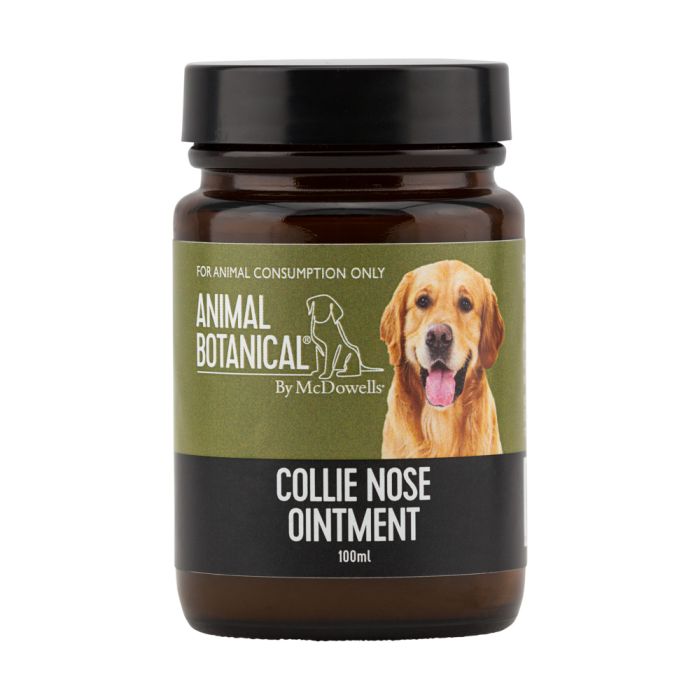'Collie Nose' problems may result from either one of two causes and don't just target Collies! The first cause is known as Discoid Lupus Erythematosus, which is an autoimmune disease that can eventually lead to squamous cell carcinoma if untreated. The second cause, Nasal Solar Dermatitis, is a lack of pigment at birth that can then lead to a gradual ulceration of the nose cells.

Collie Nose Ointment
Product Information
Description
Ointment for topical application for noses affected by Discoid Lupus Erythematosus or Collie Nose .
Formulated in a plant based natural wax jelly that includes Hypericum, Calendula, Elecampane , Pine Bark, Chamomile and Thuja along with the Bach Flowers Walnut and Rescue Remedy that will support normal healing processes and strengthen the dogs ability to rejuvenate the cells of the nose.
Volume
How do I use it?
This preparation is applied once or twice per day directly to the nose itself.
Warning: Do not use on areas where friction can occur as it may cause skin irritation.
Apply Zinc cream to pink skin after application to help with sun burn prevention.
How is it taken?
What's in it?
Related Posts
Disclaimer
FOR ANIMAL USE ONLY
Reviews
My vet took a biopsy, which returned inconclusive for DLE, but the vet said that this is common, so he proceeded to treat him with antibiotics for three months and a topical steroid. It is felt that DLE is exacerbated by sunshine, so I put sunblock on the bad spots, but he licked most of it off.
This treatment made some improvement, but the condition was very persistent, so after about six months, I took him to the University of California at Davis Small Animal Veterinary Clinic. The vets there agreed that it must be DLE and continued the antibiotic, but added a topical antibiotic. This treatment, too, made some improvement, but none of the symptoms got very much better or went away.
Then, I turned to Herbal Treatments. I found the Collie Nose treatment on the web site and received the Special Maritime Pine Bark formula with liquorice, plus the Collie Nose Conditioning treatment. It took a few weeks, but Dylan started to improve and I was so happy. After six or so months, the skin isn't red anymore, the hair has grown back, the front of his nose is black again and the texture is more pebble-like. My vet says you'd never know he had experienced DLE.
Thank you so much, Herbal Treatments.
